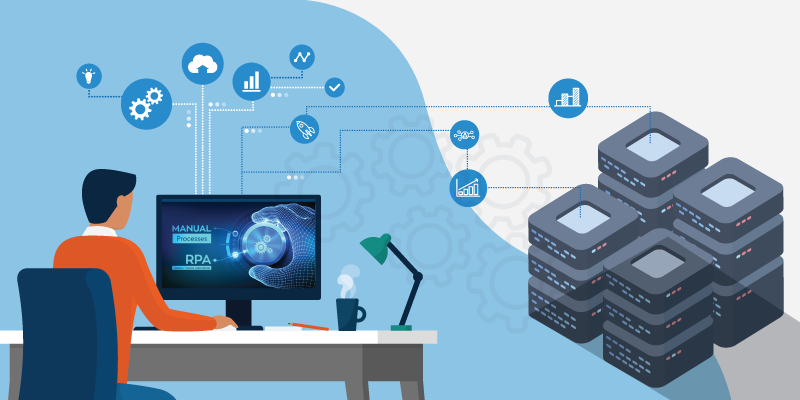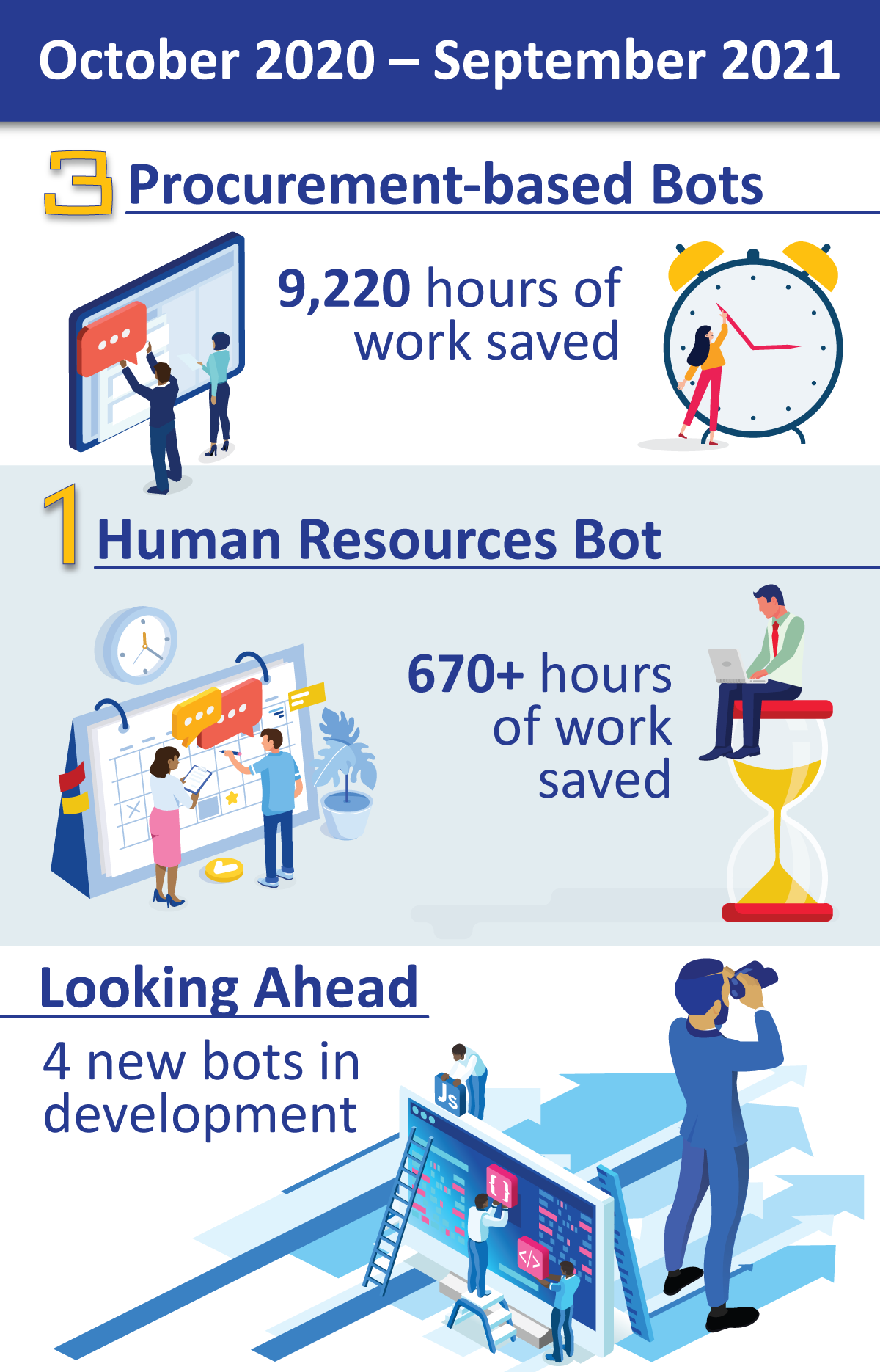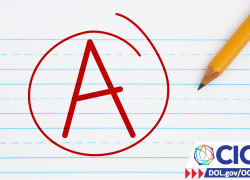
Emerging technologies can play an important role in modernizing and transforming government services for the American public, which is essential to fulfilling the Department of Labor’s mission.
In fact, we’ve embraced emerging technology and its potential to further enable mission outcomes so fully that we recently established the Emerging Technology branch within our office dedicated to spurring innovation.
What we’ve learned recently from implementing new technologies is that it’s important to think holistically — but to start small. We prioritized using new technologies and processes by breaking them down into bite-sized pieces and building upon our successes as we’ve scaled them across the department. Here’s a closer look:
 We’re committed to embracing new technologies — including bots
We’re committed to embracing new technologies — including bots
Our initial focus areas included automation, artificial intelligence and machine learning. We began by developing Robotic Process Automation (RPA) bots to reduce the amount of time employees spend doing certain repetitive tasks.
These RPA bots are designed to simplify rule-based processes and help us do our work more efficiently across all of our IT assets. In other words, they help us serve more people in less time. Specifically, RPA bots allow us to:
-
Reduce errors
-
Save costs
-
Help staff work more efficiently
-
Shift staff’s focus to tackle more complex IT challenges
RPA is helping us modernize our IT infrastructure by accelerating our efforts to make legacy IT systems (outdated IT systems) more agile and function more effectively — and the results so far are encouraging.
Designing new capabilities with our people in mind
Our focus is — and will always remain — on the people who keep the Department of Labor running, which also involves launching new technologies. In developing our RPA capabilities, we focused on a human-centered design approach. This means that during the development process, we spoke to people who would actually be using this new technology, and reviewed current administrative processes in place to identify ways we could help improve them.
Today, the department has several sub-agencies that use RPA bots to make their work more efficient.
At the end of the day, we want to improve services for America’s workers, empower our workforce with modern skillsets, and realize the benefits of the latest technologies. It’s a win-win!
So, what’s next?
We plan to continue investing in automation, AI and machine learning, while evaluating other piloted solutions like augmented reality so that we can expand our modernization efforts for tomorrow.
We are continuing to build upon the success of our piloted use cases for AI, which match apprenticeship opportunities with candidates, and improve training methods for compliance officers by way of augmented reality and wearable tech.
Our goal is to have a structure in place for discovering, piloting, evaluating, funding and scaling emerging tech for future implementation by using an “innovation incubator” approach. This is how we’ll be able to truly see the realm of possibilities to enable mission outcomes and I can’t wait!
Gundeep Ahluwalia is the chief information officer of the U.S. Department of Labor. Follow OCIO on Twitter and LinkedIn.

 U.S. Department of Labor Blog
U.S. Department of Labor Blog



